Marcos R.
Hearing the stories of the tsunami victims was very saddening and very eye opening. To see how they were dealing with the disaster and loss of so much was surprising. I could not imagine losing not only my entire house, but also, family members and friends. I can say that these days have been some of the best in my life.
continued...
For only five days, we have done and seen a huge amount of things. We have had the privilege of going to a traditional Japanese hotel in rural Japan. Everywhere I looked there were beautiful, green, and misty hills with traditional looking houses surrounding them. This has been more amazing than I could’ve imagined it. We went to a farm where the farmers told us their story of moving from Tokyo to rural Japan to start farming and how they were affected by the tsunami. They had a dog named sora, which means sky in Japanese, who was able to survive the tsunami. After weeding the area around the rice patty field, we were treated to some powdered green tea. It felt like an honor for her to prepare our tea for us because, while doing this, she was wishing for our wellbeing.
Tourist Mode Activated
Hali N.
We’re in Tokyo now! It’s AMAZING. I’ve decided I want to live here eventually (or now either is good). Strangely, one of my favorite parts has been the highways here. They’re raised and run above the streets and are next to the middles of buildings. It looks like every single anime/manga/post-apocalyptic neo-Tokyo ever, but minus the aliens and chaos. It sort of makes me feel like I’ve been transported into some futuristic world and I’m very surprised that I haven’t seen any giant robots or the like.
1. Debriefing with other schools 2. Dinner in Tokyo 3. Only boys allowed on the sumo ring
4. Hot pot 5. Crowded Asakusa Shrine 6. Protest against nuclear disaster
So far I’ve had super much fun. I was super lucky to have been chosen for this experience and I’m super glad I even signed up for this trip. There have been super fun moments as well as some strong moving moments where I nearly cried. I could tell it all, but if I did, you’d fall asleep, so I’ll limit myself.
The best part about this trip is hanging out with my friends while enjoying Japanese culture. I have super much fun with them all the time. We eat delicious food together, chat on the bus and airplane rides, chill in the onsen (hot spring bath) together (well at least with the guys), and sing karaoke together. All the food here is so delicious, I fill myself until my stomach is about to explode, along with everyone else. We also get to chat together about our thoughts, and to pass time on the long trips between destinations. All of the guys even get to bathe together in the onsen, which is a public hot spring (it’s super relaxing). We even sing karaoke. It’s really super uber enjoyable to watch all of my friends singing their hearts out, no matter how bad they sing. I especially enjoy Alan’s “amazing” singing. This trip would not be nearly as fun if I wasn’t with my friends, and I’m having a lot of fun experiencing Japanese culture with them.
Adam C.
My favorite part so far was the farm experience; the family was so welcoming! We felt like friends already. They showed us what daily life was for them since the disaster. My sympathy goes out to them because life is so different for them and there’s almost nothing they can do but keep living, keep smiling, and keep moving. As I imagined, most kids are always waving “hi.” I feel like a guest of honor. I am honored to meet them and be in their home.
Najet Ke.
So, a few days ago, David T. made a rather interesting comment about how people in Japan have a very different view about individuality than we do in the United States. He observed how, in an hour long bus ride, we only saw about 3 colors of car and everyone wore either a white, blue or pink shirt and bland pants. Of course, this was in Tokyo, where one would expect to find all the oddities of the country, so I just accepted that people didn’t have any desire for the kind of individuality we have in the United States. I just assumed that, in Japan, people wanted to be valuable to society rather than stand out. I, however could not stop noticing how, as we traveled further away from the city, we began to see more variation among cars and the clothes people wore. Although I noticed that there was a clear style, a bland shirt with bland pants, there were more people and cars that stood out compared to Tokyo. And this surprised me because it was simply the exact opposite of what I expected. One would think that Tokyo, a modern city with influences from around the world, would take on some characteristics that we consider modern and desirable.
Temwani M.
Wednesday, 7/11/12
Ichinoseki, Japan
Today was a really exciting (but tiring) day and I experienced many different aspects of Japanese culture. The first thing we did was go to different farms. We were broken up into three groups, and my group went to a goose and cow farm. Grace Y, Nicole, Mariana, Alan, Temwani, Sam, Noah, and Marcos were also in my group. The couple there was really friendly and nice. The wife, Ms. Tanaka, was with us the entire time, and explained to us how the farm works. She talked many times about how they work with the animals in a way that benefitted both themselves and the animals. For example, the geese were provided a place to live and feed while in exchange they ate bugs and fertilized the rice paddy. She also talked about how, after the 3.11 disaster, their farm has been losing business because of people scared of radiation. She also talked about how their dog, a black lab, survived the tsunami, but the owners could not continue to take care of him.
Afterwards she lead us down to the rice paddy, where the geese swam right up to us. The geese were a hybrid of duck and goose, making them fast swimmers but unable to fly. The geese were only a few months old, and really cute! We got to feed them and even pick them up. Of course we had to work as well, so we started cutting the weeds surrounding the rice paddy and my job was to pick them up. A local camera crew filmed our work and experience.
After we finished weeding, we went up outside of the house for tea and snacks. While some people went inside to help prep for tea, those of us outside played with the dog, Sora (sky), and the cat, Kuma (bear). I stayed outside because I was totemo kitanai, or really dirty (from carrying muddy grass). We got to stir our own green tea from powder, and ate a cauliflower Alan helped pick, and mochi-like red bean snack.
Once we were finished dining, the camera crew interviewed us a little (mainly Mariana, who spoke the most Japanese). When they left, we walked down the road to their cow barn, where we got to brush and feed their cows. They were really sweet and gentle.
Right before we left, Mariana made an appreciative departing speech, then I gave them a gift (Boston calendar). Ms. Tanaka seemed to really enjoy our help/visit, and hugged us all goodbye.
Celine C.
2012.07.12
To be honest, I’m not quite sure where to start—the agonizingly long plane ride, our serene time in the onsen (hot springs bath), or the food. Oh man, the Japanese cuisine! Everything has truly been such an amazing experience.
Today was, however, especially special as it was one of the greatest highlights of our trip thus far—visiting the disaster-stricken sites in Ofunato and Rikuzen Takata City. We first visited the Saito Confectionary factory to see the process of making their specialty “seagull egg,” which we also received as delicious omiyage (souvenirs). Mr. Saitou, the CEO, himself gave us the tour before leading into a presentation of his experience evacuating his office and employees, searching for his missing family members, and enduring life at home without heat, electricity, and other needs. Everything was so overwhelming, but it was a reminder of how important it is to be able to share what we’ve learned once we get back. Something that was really memorable for me was seeing the word kizuna (bonds of friendship) at the end of his presentation, and then being able to speak about how the kizuna between Japan and the US has strengthened from our experience today. (Of course, seeing the TV camera up in my face as I gave the thank you speech will also be something to look back on … and hopefully laugh about in the future.)
Afterwards, we went on a bus-tour guided by Mr. Konno, another survivor in the neighboring town. From the authentic replica of a traditional wealthy farmhouse, to the remnants of Mr. Konno’s home, everything was truly unbelievable. I could not believe that I was really seeing all of the damage and debris in person, and then what a rare opportunity this experience was. While we’ve all seen pictures or perhaps videos of the area on the news, to be able to stand in front of a building with just a few survivors …. I was once again reminded how much my responsibility as a participant of this trip had grown. Mr. Konno was an incredible man—friendly and humorous, but also very earnest and sincere. I feel really honored to have been able to meet him and hear his story.
The Solitary Miracle Tree. The Flame of Hope. Both were inspiring monuments of Iwate Prefecture’s efforts to recover and determination for the future. But above that, Mr. Konno’s words—what was said and unsaid—were the most touching symbol of Japan’s will.
“Please don’t cry for me.”
|
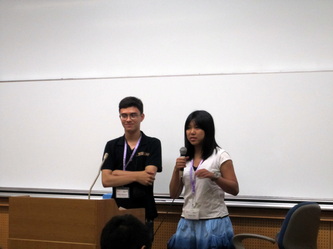
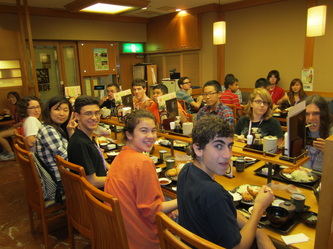

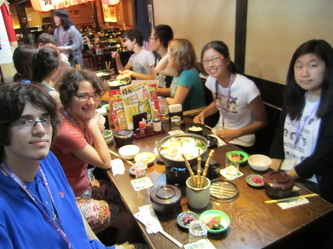
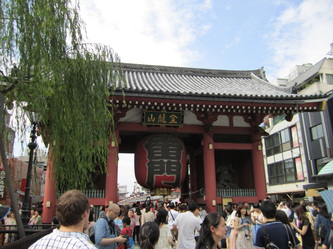


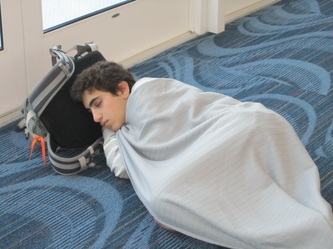

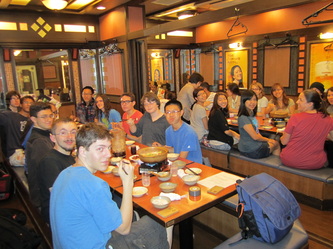
 RSS Feed
RSS Feed